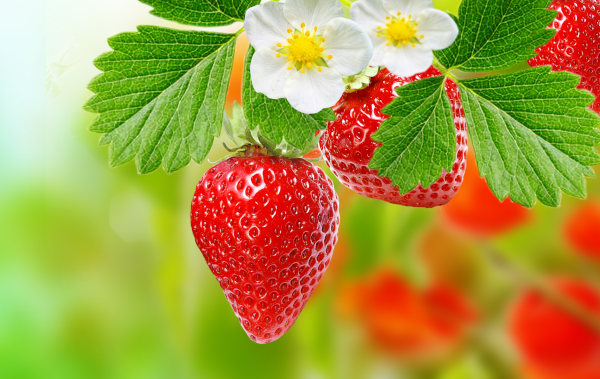How to grow Fragaria
Better known as the strawberry, this deciduous or semi-evergreen perennial is a low-growing, stoloniferous plant popularly cultivated for its sweet, juicy fruit. There are three main types of strawberry:
- Summer-fruiting: the most popular among gardeners, producing the largest fruit over a short yet heavy cropping period from early to midsummer. There are many varieties available, each of which can be classed as early, mid, or late fruiting. Popular examples include ‘Honeoye’, ‘Symphony’, ‘Elsanta’ and ‘Elegance’.
- Alpine: also known as woodland or wild strawberries, intermittently producing much smaller fruit over a longer period. All descend from the alkaline-loving Fragaria vesca and are particularly well-suited to a lightly shaded spot. Examples include ‘Mignonette’, ‘Yellow Wonder’, and Ruegen’.
- Everbearing: produce medium-sized fruit in two or three flushes, starting in early summer and ending with the first frosts. These can be useful for smaller spaces, giving the extended cropping period of three different summer-fruiting plants in one. Examples include ‘Aromel, ‘Christine’, and ‘Mara des Bois’.
Strawberries originate from open woodland, hedgerows, and grassy spots and can be grown in sun or light shade. They are usually offered for sale either as bareroot plants in autumn or spring, or as potted plants from late spring onwards.
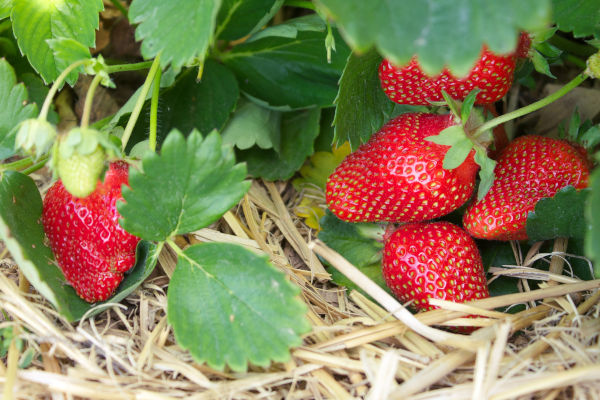
Zantedeschia is a genus of flowering plants from the family Araceae and is native to southern Africa. With a rich history dating back to the Ancient Romans, these deciduous or semi-evergreen perennials have been used as a symbol of celebration. Zantedeschia was Named after Professor Giovanni Zantedeschia, an Italian botanist.
There are two main forms of Zantedeschia: hardy and tender. Hardy forms of the plant can be grown outdoors, enjoy moist soil and full sun or partially shaded conditions - these are known as Arum lilies. Tender forms of Zantedeschia prefer being grown in containers or pots and should be brought inside over the winter - these are known as Calla lilies.
With tuberous flora in all colours from whites, yellows and oranges to deep reds and purples, Zantedeschias are not to be overlooked in any garden, as long as they have sufficient sunlight to grow in.
Ready to learn more about growing Zantedeschia? Read on for all there is to know...

Key Information
Soil pH
Position
Hardiness

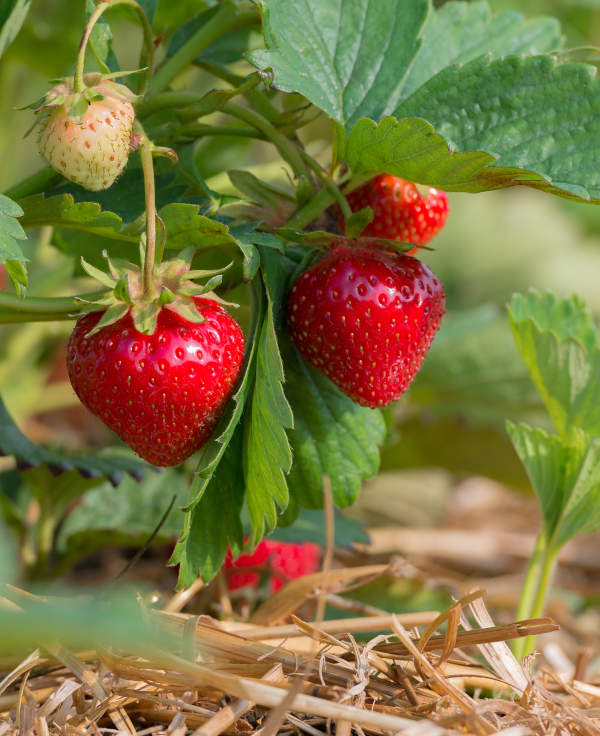
Where & when to plant Fragaria
Position - Full sun to light, dappled shade. The larger fruits of summer-fruiting and everbearing varieties tend to ripen best in a sunny spot, while the smaller-fruited alpines do just as well in light shade.
Soil - Fertile, moist, well-draining. Strawberries will tolerate acid soil but thrive in neutral to alkaline (this is particularly true for alpine varieties).
Flowering Period - Spring/ summer depending on the species/ variety
Hardiness - Hardy/ H6/ -15°C to -20°C
Fragaria aer usually sold either as bare roots during autumn or spring, or as young, potted plants from late spring. Plant bareroots straight into the ground on arrival, or, in the event of frozen or very wet weather, temporarily pot into a container of damp compost so you can wait for better conditions. Potted plants can be planted out at any time during the growing season, though for best results do this in spring. Summer plantings will need to be watered frequently.
Strawberries are traditionally grown in rows in a dedicated strawberry patch, though can also be used to edge a path or border, or grown in containers such as window boxes, hanging baskets, or special strawberry ‘towers’. Growbags are another option. Alpine varieties make effective groundcover for a lightly shaded spot.
How to plant Fragaria
Bareroots should be soaked in a bucket of water for a few hours as soon as they arrive. Following this, proceed as follows:
- For planting in the ground, dig the soil area removing any large stones and weeds and breaking up any lumps. Mix in some organic matter such as manure or garden compost, along with a high potassium general fertiliser such as blood, fish, and bone, Vitax Q4, or tomato feed. If your soil is on the heavy side, now is also the time to add a generous helping of horticultural grit. Rake level and firm with your heels. Rake level again.
- Bareroots should be soaking nicely at this point. If you are planting pot-grown plants, give a good water prior to planting.
- Plants should be spaced 35-40cm apart, and rows (if using this technique) should be 75-100cm apart.
- Dig a hole approximately twice as large as the bareroot (or rootball if planting a pot-grown plant).
- Place the bareroot/ pot-grown plant in the hole, aiming for the crown to sit just above the surface of the soil. Too low and the plant can rot, too high and the roots can dry out.
- Backfill with soil and firm in gently with your fingers.
- Soak well with water.
- Mulch with a little well-rotted organic matter, taking care not to cover the crown.
- You may choose at this point to apply a strawberry collar or mulch mat around each plant to suppress weeds and protect the fruit from the soil. Alternatively, some gardeners like to plant through a weed membrane, while others go for the traditional layer of straw – applied to the ground as fruits begin to form.
- For planting in containers, first choose an appropriate pot with plenty of drainage holes. Strawberries should be spaced 10-20cm apart in a container situation.
- It can be worth filling large containers in situ to save yourself the trouble of moving once full.
- Bareroots should be soaking nicely at this point. If you are planting pot-grown plants, give a good water prior to planting.
- Use a good quality potting compost with a generous amount of horticultural grit mixed in, along with some high potassium general feed – this tomato feed is ideal.
- Start by partially filling the pot with compost, aiming for the crown of the plant(s) to sit just on the surface, with a gap of around 3cm between this and the top of the pot.
- Infill all the space surrounding the bareroot or root ball with compost, firming down with your fingers then adding a little more so the plant is held tight.
- Pick up the container (if you can!) and lightly tap on the potting bench or ground a few times to help further settle the compost around the plant.
- Soak well with water.
- For permanent containers, a mulch with horticultural grit will look attractive and help to prevent a ‘cap’ or crust forming on the top of the compost (something container plants can suffer due to the artificial nature of their watering). This can also be a good barrier between the fruits and the compost.
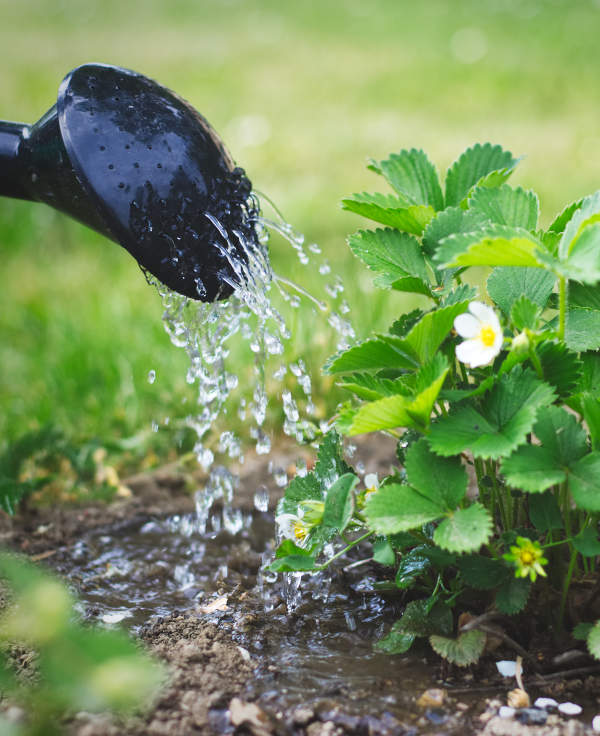
What to plant with Fragaria
We are big fans of using companion plants to naturally repel pests and therefore reduce the need for chemicals in the garden. When it comes to strawberries, aromatic plants such as allium, nepeta, achillea, and thyme are said to be effective in warding off attacks from slugs, aphids, while also attracting beneficial pollinators with their flowers.
When used as groundcover in a lightly shaded spot, alpine strawberries look beautiful mingled with Gallium odoratum and vinca. Not only does this formidable trio form a near impenetrable, weed-suppressing mat, it twinkles with delicate starry flowers for months on end. Simply stunning.
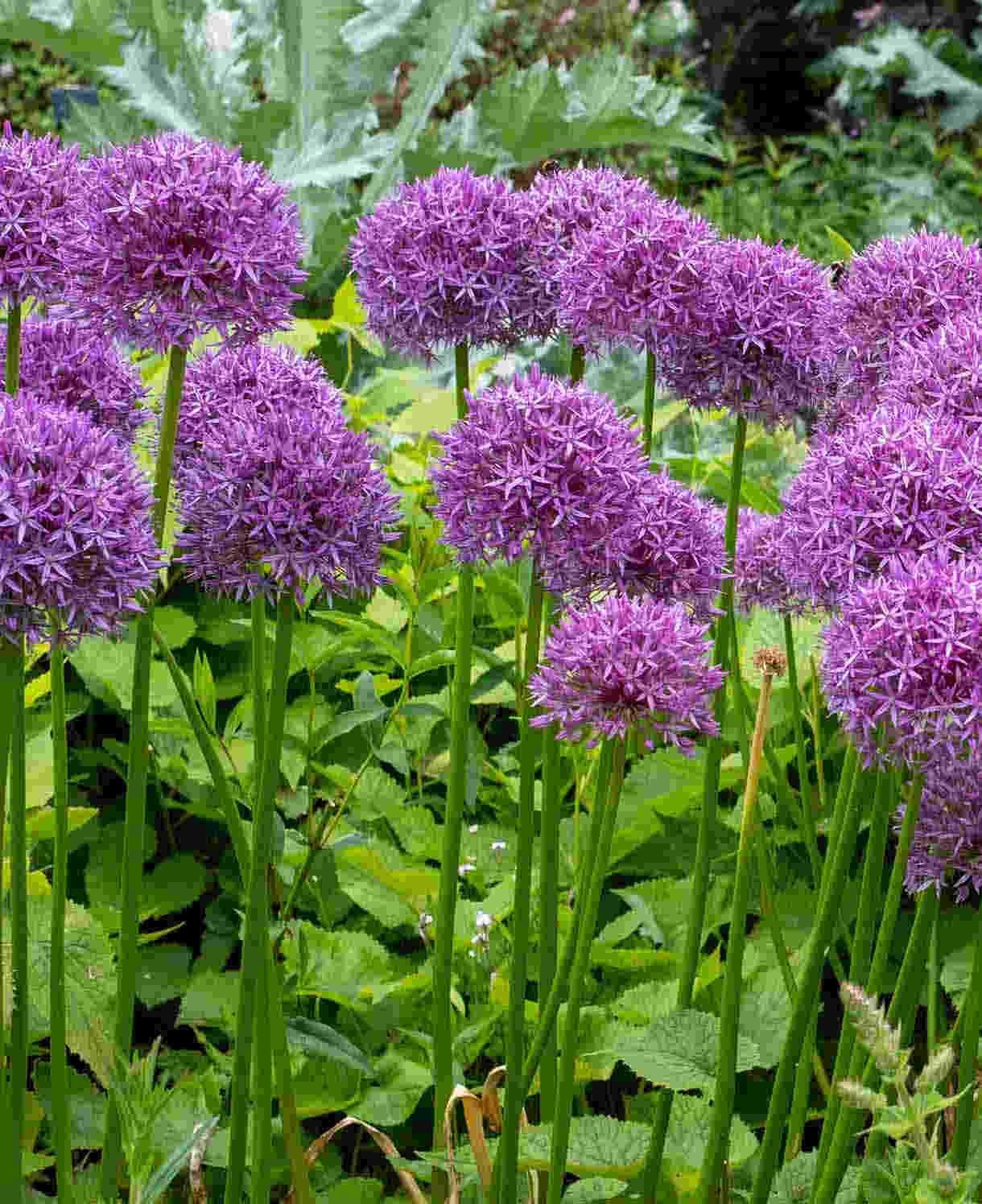

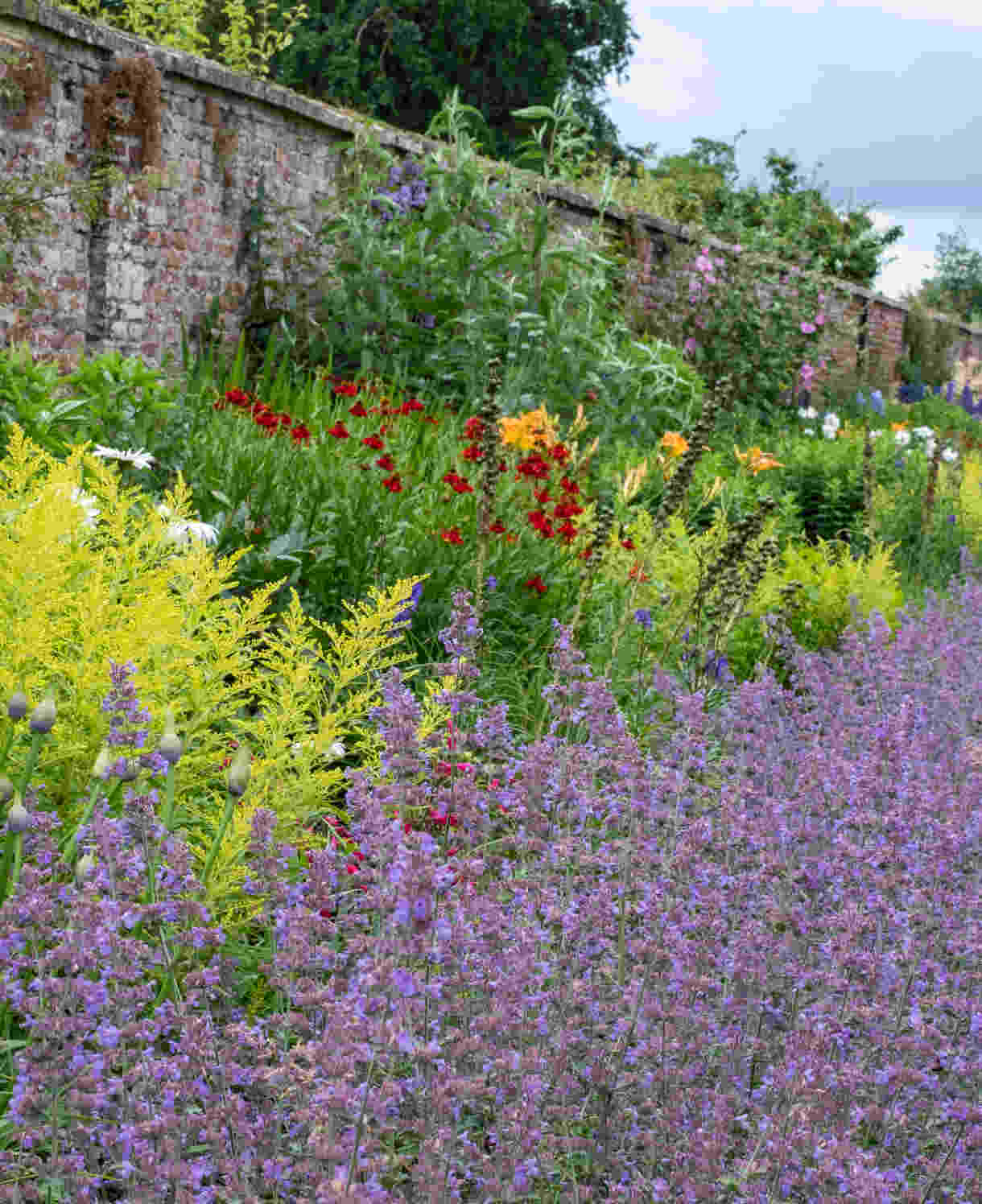
How to care for Fragaria
Pruning and Deadheading
Though not essential, some growers recommend removing the first flush of flowers on newly planted everbearing strawberries so they can direct their energy into becoming successfully established.
Give summer-fruiting and everbearing strawberries a trim down to 4-5cm above ground once they have finished fruiting. Alpine strawberries can be given the same treatment or left to their own devices if being grown as groundcover.
Strawberry plants tend to run out of steam after about three years, so will need replacing periodically with new plants. Fortunately, most of them can be propagated very easily by ‘runners’, which are the creeping, rooting stems (or stolons) many strawberry plants send out.
Watering
Water new plants frequently until they are well established. All strawberries (new or old) should be kept watered during any hot, dry spells in the growing season.
Strawberries in containers will require regular watering throughout the growing season, regardless of the weather. Allow the top few centimetres of compost to dry out between soakings (check this by inserting your finger into the compost to test for moisture).
In all cases, try to avoid wetting the crown of the plant or the fruit, as this can lead to fungal problems such as grey mould. Aim to water the soil rather than the plant (you might want to use a seep hose if you’re growing them through a weed membrane, installed between the soil and the membrane) and try to do it in the morning rather than evening. This is so plants can dry out rather than sitting wet overnight.
Feeding
In the ground, an annual spring feed of a high potassium general fertiliser such as tomato feed, Vitax Q4, or blood, fish, and bone, followed with a mulch of manure or garden compost should provide sufficient nutrients for your strawberries. The mulch has the added benefit of suppressing weeds and locking in moisture.
In containers, along with initially including our tomato feed at potting stage, a weekly or fortnightly dose of high potassium liquid feed is also recommended (a liquid tomato feed is ideal).
Mulching
As well as the organic matter mulch recommended above which is applied largely for nutritional reasons, for quality fruit it is important to also provide some form of barrier mulch. The aim of this is to prevent the fruits from making contact with the soil, to avoid uneven ripening and rotting fruits.
A mulch of this sort might be the traditional straw (applied once fruit appears, then removed at the end of the growing season so as not to harbour pests and diseases), a weed membrane, or individual mulch mats or strawberry collars placed around each plant.
Cold Protection
Strawberries are fully hardy and able to withstand a UK winter without the need for additional protection.
Pests and Diseases
One of the most common challenges faced when growing strawberries is slugs, mice, birds, and countless other hungry creatures all vying with us to enjoy the tasty end results. Fine mesh netting is the best deterrent, installed as fruits begin to form and removed once they have finished. Aromatic companion plants can also be employed to mask the scent of ripening fruit. See ‘What to plant with fragaria’ for some of our top suggestions.
Grey mould can be another issue. This is often caused by excessive moisture and best avoided by following the watering techniques described above.
How to propagate Fragaria
Summer-fruiting and alpine strawberries are spectacularly easy to propagate by runners in late summer. Simply:
- Fill a 9cm pot with a gritty compost mix.
- Place next to a strawberry plant and, using a piece of wire bent into a U shape, peg a runner down onto the surface of the compost.
- Keep the compost moist to encourage the formation of roots.
- Once rooted, the runner can be snipped off the parent plant and grown on as a young plant.
Everbearing strawberries tend to produce little to no runners, and usually need to be replaced with newly bought plants.
* Many plants carry Plant Breeders Rights and cannot be propagated for commercial purposes.
Common Fragaria Questions
- What is the best way to grow strawberries/ how do strawberries grow for beginners?
As long as they are given plenty of nutrients, water, and drainage, along with a little care taken to protect the fruits, strawberries can be grown in almost any situation. They are suitable for all skill levels, from children to experienced gardeners. - What month is best to plant strawberries?
Plant bareroots as soon as they arrive, and potted plants anytime during the growing season (though spring is best).
